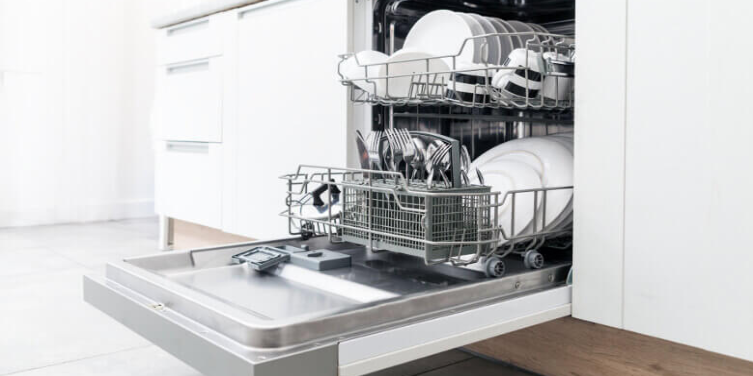
Is your dishwasher failing to do its valuable job? When you open the door to find your plates and cutlery still dirty, you know you have a problem. If routine cleaning and products can't fix it, then it could be something more serious.
Knowing why your dishwasher is not filling with water is a challenging task. Below, we give the main reasons your dishwasher isn't getting water.
Dishwasher Isn't Getting Water From the Source
Your first stop should be the water source. While the rest of the house may seem fine, there be a problem with the connections between the water heater hose and the water pipe. Make sure it has not become twisted or has blockages inside.
This hose will also have a tap to turn the water completely on or off. Make sure that it is set to allow water to flow through fully.
Water Inlet Valve
The first component in the dishwasher that you should check is the water inlet valve. It is responsible for the amount of hot water allowed into the dishwasher. It is controlled by the electronic panel or dials you use to set the machine.
Begin by unplugging the dishwasher and removing it from the water supply. Remove the lower access panel.
Behind the lower access panel, you should find the valve. The valve should have two wires attached along with two pipes. One will be a water outlet and the other will be the hot water inlet pipe, which you need to check to see if it has enough water pressure.
Inspect the valve visually. See if there is any wear or damage to it that may be preventing water from entering the dishwasher. If it looks damaged, then you will need to order a replacement.
Door Switch
The door switch is very important, as it tells the dishwasher when the door is shut so it can fill with water. If it is not working correctly, then the dishwasher may think that the door is open and it is unable to fill.
Begin by unplugging the dishwasher and removing it from the water supply. You will find the switch at the top of the door, behind the main panel. The inner and outer doors will need to be carefully separated before you can locate the switch.
The switch will need to be removed for testing. For this, you will need a multimeter This should be available at most electrical or hardware stores.
Set the multimeter to Rx1 and place one probe against the other. One should be touching the COM terminal with one touching the N.O. terminal. The reading should show infinity with the actuator turned off.
Press the actuator inwards until you hear a click. It should then read zero. If anything differs from the above readings, then the switch has a problem.
Float
The float is the device that prevents the washer from overflowing. It floats on top of the water level as the dishwasher fills. When the optimum levels are reached, it sends a signal that tells the water inlet valve to switch off.
Start by unplugging the dishwasher from any electrical supply. Open the dishwasher and remove the cover that houses the float. Pick the float up and drop it a few times.
When you do this, check it is not being held down or is impeded by anything else. Check the guide tube, and remove anything that may be blocking its path. Do a secondary check to see if it has any wear, tear, or damage.
Finally, remove the access panel and see if the mechanics attached to the float are in working order. If you encounter any problems, you may have to order a replacement float.
Float Switch
As the float rises, it triggers a float switch to send a signal to the water inlet valve. It may be that the float is fine, but the switch is causing the problem. It may be telling the dishwasher not to fill if it is stuck on one setting.
Remove the dishwasher from the power source, as you will need to remove and test electrical components. For this, you will need a multimeter. Start by removing the lower access panel.
The float switch will be behind this panel. You will find it below the float assembly. Disconnect the wires from the switch, taking care not to pull at them.
Set your multimeter to Rx1. Place the switch on the two terminals. The reading should show as zero or infinity.
While the switch is still touching the terminals, press in on the switch itself. The reading should now change to the opposite (zero to infinity, or infinity to zero). If the reading gives anything else, then you will need a replacement part.
Solenoid and Drain Valve
The valve that allows water to drain out is regulated by a solenoid. A faulty solenoid will not allow the water to drain out, which in turn may prevent the washer from refilling.
This is another device accessible via the lower access panel. The drain valve should be located close to the motor. Check that the near gate arm mechanism can move up and down freely and is not hindered.
Once you remove the solenoid, check it using the same method as you would the other switches mentioned above. However, this time you are looking for a meter reading of around 40 ohms. Anything other than this signals that you need a new solenoid.
Hire a Professional
If your dishwasher isn't getting water after all this, skip the attempted DIY repair as it is time to call in a professional. The system may have a serious problem, or you may have just overlooked one of the simpler ones.
Mr. Rooter should be your first stop when looking for plumbing and dishwasher repairs. Click here to contact us, and let Mr. Rooter solve your plumbing dilemmas starting today!

